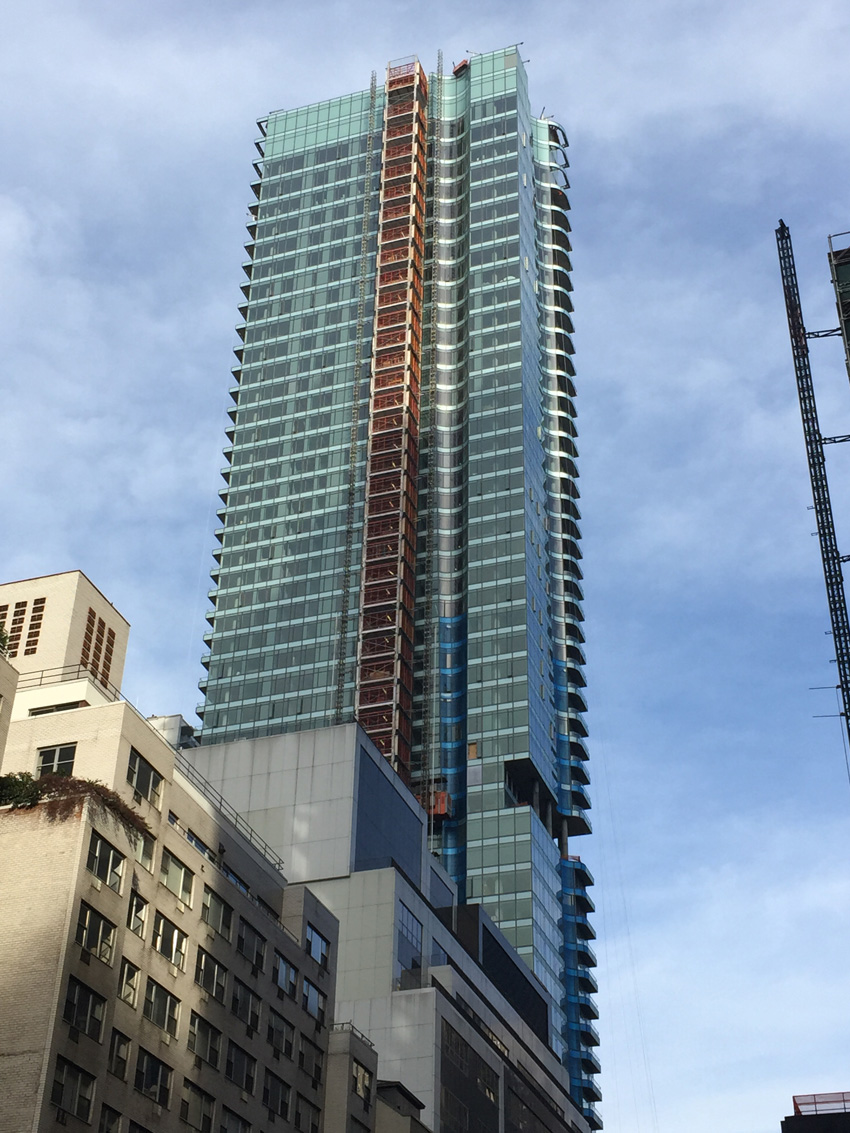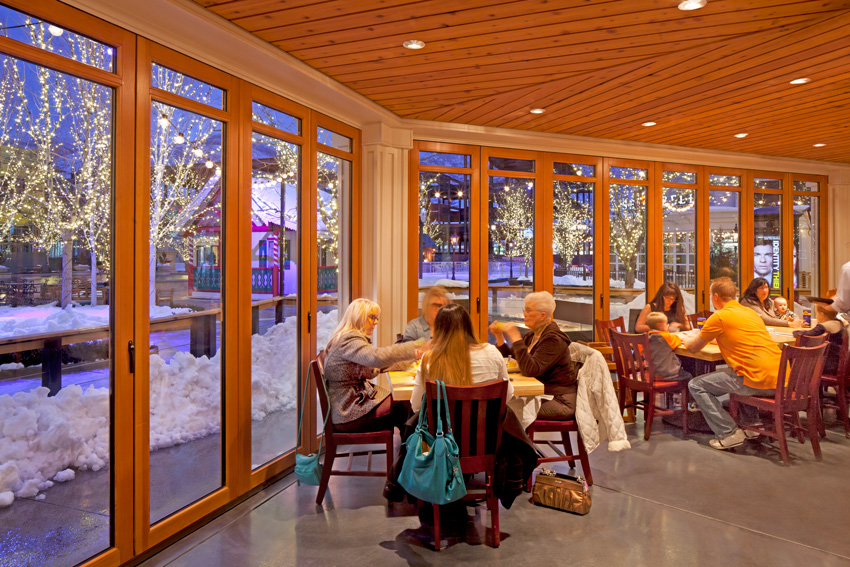125 Years of Product Innovation and Evolution
Glass and Glazing Today: Wide Selection + Digital Tools = Optimized Performance
As the features and performance characteristics of today’s glazing products continue to expand, so too do the demands on architects to meet the varied performance requirements embedded in the codes and encouraged by various rating systems, not to mention the increasingly sophisticated expectations of their clients. More demands plus more choice plus more access to information can create stress and confusion when it comes to making critical decisions concerning the choice of glass for a project.
Luckily, progressive glass manufacturers are creating new online tools that can help take the friction out of the decision-making process and provide architects with a suite of systematic procedures for evaluating, comparing, and selecting high-performance glass products. One of the most compelling advances is this area is the development of online visualization tools that allow architects to directly compare the aesthetic aspects of glass products by generating photo-realistic images of both exterior and interior glazing views. This allows designers to evaluate the aesthetic properties of virtually any glass product available from a manufacturer. They simply choose the glass they want to visualize, select the building and perspective that fits their needs, and observe how various sky conditions affect the appearance of the glass. All while sitting at their desks in their offices.
As Kyle Kramer of Fusion Architecture notes of a specific visualization tool that his firm used for a project in New Orleans, Louisiana: “In the past, we would have to order insulated glass panels and wait for delivery in order to make our glass selections. This would entail bringing the glass samples outside, over multiple days, to view the glass in different weather conditions. The visualization tool we used greatly condenses this process, as it allows us to simulate different weather conditions for all products without ordering and waiting on the actual samples. We ultimately order a sample to make our final selection, but we can begin our other material selections while we wait on the sample based on the results from the tool. We can also view different glass selections directly with a client if needed.”
And the selection tools available to designers don’t stop with visualization. Performance calculators can be used to model the thermal and optical properties for a range of glass options—from monolithic uncoated glass to highly complex combinations of substrates, coatings, and interlayers—and then compare a variety of options, prior to selecting specific configurations for further analysis. One leading manufacturer also provides an energy calculator that takes this performance information and uses it to compare the energy cost, consumption, and financial payback impacts of alternative glass products in a building based on hourly simulations of glazing options, building parameters, and project location. The results can be used during schematic design to compare annual energy costs for a variety of exterior envelope scenarios.
And some manufacturers even provide tools that generate Revit BIM models— integrating the information generated by the other tools—that can be incorporated directly into an architect’s project documentation, significantly reducing extra work and removing the potential for errors all at the same time. This multi-tool approach was used with great success on Skidmore, Owings & Merrill’s 252 East 57th Street condominium project in New York City, New York, which includes a 300,000-square-foot high-performance glass curtain wall. The glazier for the project, Benson Industries, in cooperation with the architect and with assistance from the glass manufacturer, utilized the new design tools to ensure that the glass selected effectively and efficiently met the aesthetic and performance goals for the project.
These digital tools, combined with increasingly sophisticated in-person technical support from glass manufacturers, are providing the guidance architects need to navigate the wide range of glass products on the market today and to select the precise combination of performance characteristics that meet their project requirements.
As Leigh Anne Mays, national architectural services manager for Guardian Glass North America, notes, “The design process for glass is being revolutionized. Architects can more accurately render glass through the use of BIM tools; they can visualize glass before samples arrive; and they can calculate energy performance more accurately than ever before. Specifying the right glass for the right job just got a whole lot easier.”

Photo courtesy of Benson Industries
The glazing for this high-rise condominium project in New York City, New York, (shown here nearing completion) was selected and optimized using the customize/visualize/analyze/design and select process made possible by the new digital glass-selection tools recently introduced to the market.
Opening Glass Walls Today
Today’s opening glass walls come in a wide and growing variety of shapes, sizes, configurations, and performance capabilities. Like most windows and curtain walls in today’s buildings, they do not carry any structural load but, unlike curtain walls, they fold and slide in order to create large openings that seamlessly transition indoor and outdoor spaces, yet close securely to form a secure, durable, and comfortable exterior wall.
Folding glass walls comprise a series of hinged panels that fold and stack. They can be either inward or outward opening and can be used to span openings up to 40 feet wide. Panels are typically 3-plus feet wide and up to 12 feet high, depending on the frame material and the application. The entire wall can fold, move, and stack to one side—much like simple folding partitions, albeit at much higher levels of performance and elegance—and separate swing doors can be included to provide easy access when the wall is closed. Some of the newer models also pivot and fold all the way back, so they can stack out of and parallel to the opening, which is an ideal configuration for a patio that wants to provide unobstructed flow between inside and out. Folding walls can be framed in aluminum, wood, or an aluminum-clad combination and are specified in top-hung or floor-supported configurations, depending on the application. They can also be manufactured using virtually any of the high-performance glazing products on the market today.
Sliding glass walls contain multiple panels that slide on a single top-mounted track. Within the opening, they ride over a single floor track as a guide, but once outside the opening, they can be stacked virtually anywhere because they are simply hanging from the head track. As a result, sliding walls can be extremely flexible and can be used to span very large openings (greater than 40 feet) and to create open corners. The single-track configuration can also accommodate multiple angle changes in the layout of the wall to meet the specific design intent of a space. As a consequence, sliding glass walls can offer a much wider range of configurations than folding walls, a clean sweep of individual panels that can support virtually any shape, all within a single track. Framing options include aluminum and wood, and the same wide range of glazing options available for folding systems are available for sliding glass walls.
Frameless glass walls are a special subset of sliding walls. They have aluminum top and bottom rails, but no framing on or between the glass panels, providing physical separation while allowing total transparency. Standard panels in this system type are manufactured up to 4 feet wide and 10 feet tall, with additional custom sizes available.
Whether folding, sliding, or frameless, today’s opening glass walls are designed, manufactured, and installed to meet the very high performance standards demanded of exterior walls today.
Energy Efficiency: Panel frames are thermally broken to reduce thermal conductivity. Panel glazing is NFRC certified and Energy Star approved, and at least one manufacturer has developed glass wall configurations that meet Passive House standards. When closed, opening glass walls keep the cold outside and the warmth inside, even right up against the glass and frames.
Weather Resistance: Despite the fact that they fold and slide, opening glass walls have highly sophisticated seals and framing hardware that prevent water penetration and can stand up to hard and frequent use. AAMA-approved, hurricane-resistant configurations can also be specified to ensure continued performance even during extreme events.
Security and Durability: Multipoint locking entry doors as well as extra-long, tamper-resistant, dual-point locking rods between panels ensure that systems meet or exceed most forced-entry testing for commercial-grade door panels. To ensure both the security and long-term durability of the walls they are considering, architects can and should request independent testing results for air, water, forced entry and impact resistance, as well as for thermal performance and structural loading.
Occupant Comfort: Opening glass walls are designed to keep occupants comfortable when they are closed, even next to the glass. The panel materials, sealing technologies, and locking hardware that make this thermal comfort possible also contribute to acoustic performance, allowing opening glass walls to achieve high Outdoor-Indoor Transmission Class (OITC) ratings and effectively reduce the impacts of outdoor noise.
Opening glass walls provide a dynamic new addition to the exterior envelopes of today’s buildings. As Matt Thomas of NanaWall Systems notes, “Opening glass walls provide the opportunity to quickly transform any interior space into a unique indoor/outdoor room. And during inclement weather, the system quickly closes to provide a comfortable, climate-controlled indoor environment in a matter of minutes. It truly offers the best of both worlds.”

Photo courtesy of NanaWall Systems
The monumental, wood-framed panels of this folding wall system for a restaurant in Framingham, Utah, were chosen to fit well aesthetically with the surrounding park and its natural landscape. In addition to letting the outside in during warm weather, the system also clearly keeps customers warm and comfortable in colder months.
Notice

www.armstrongceilings.com/totalacoustics

www.exceldryer.com/products_xlerator

www.guardianglass.com/commercial

www.nanawall.com

www.ntma.com









